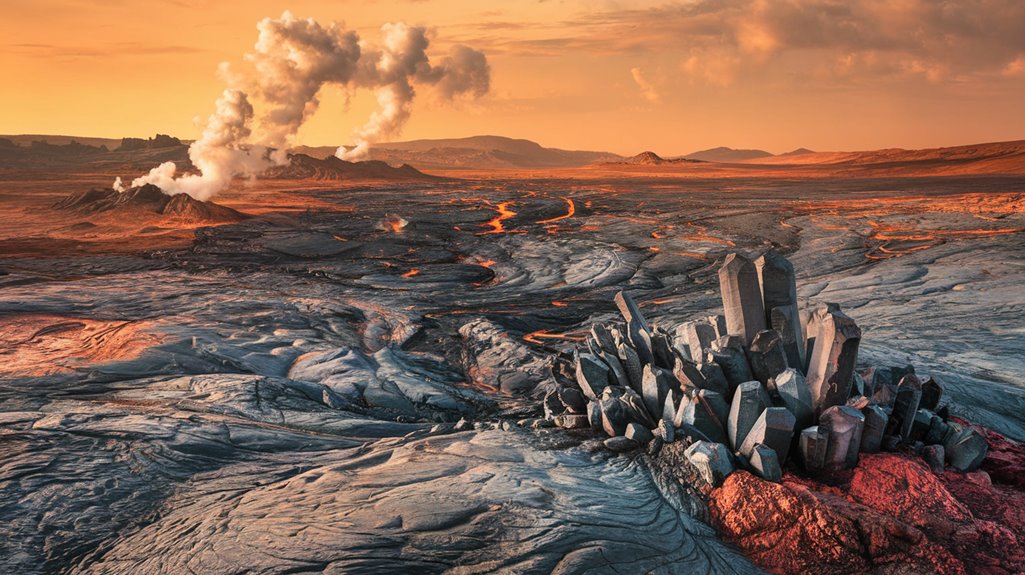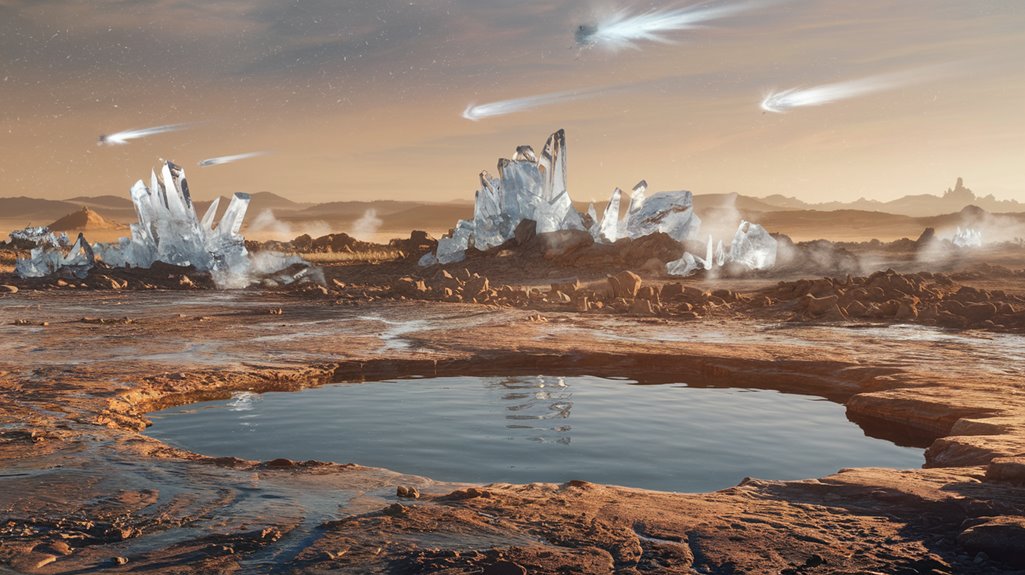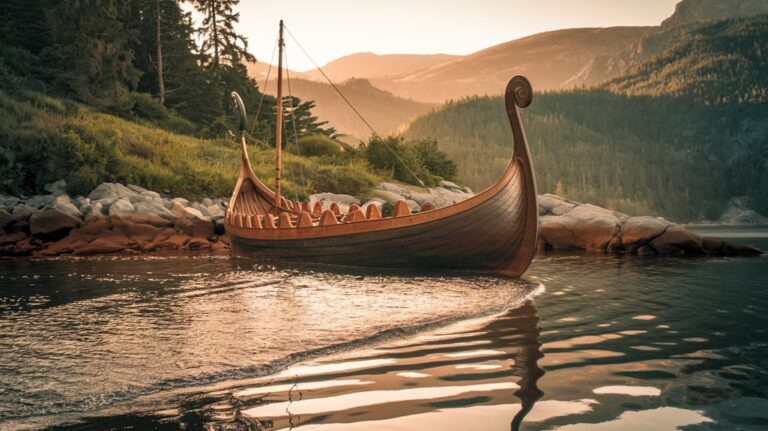Earth Once Had No Oceans
You wouldn't recognize Earth if you traveled back billions of years – it was literally a vision of hell. Instead of our familiar blue marble with vast oceans, you'd find a molten wasteland of endless volcanic eruptions and searing temperatures that would vaporize water instantly. But this hostile environment held the key to our planet's future seas. The story of how our oceans emerged from this chaos reveals surprising twists about Earth's transformation from a barren sphere to our life-sustaining world.
How Earth's First Oceans Emerged From Volcanic Activity
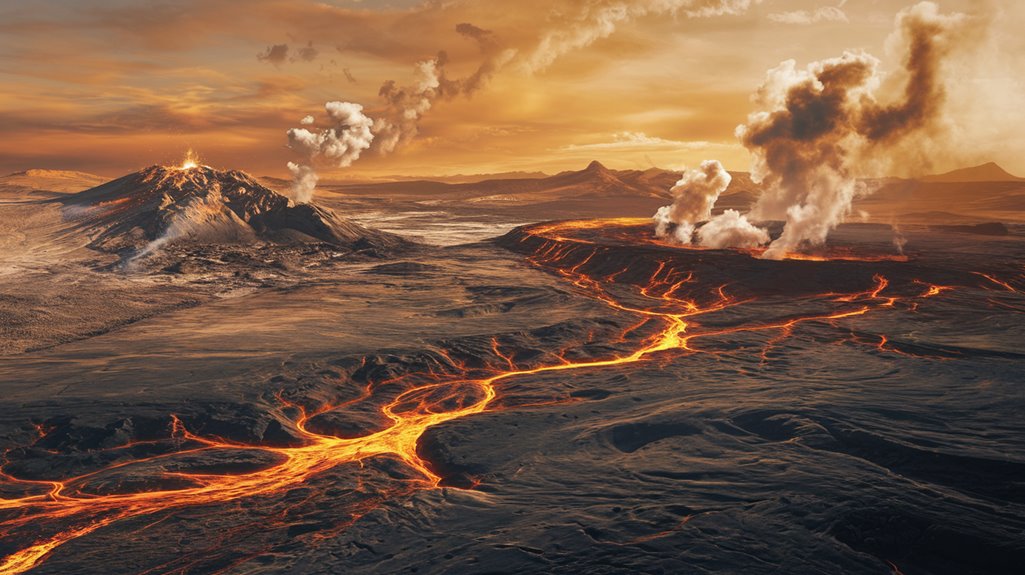
While Earth's surface was initially too hot for liquid water to exist, intense volcanic activity played a crucial role in forming our planet's first oceans. Through volcanic outgassing, magma released water vapor and other gases from Earth's interior, which eventually condensed as the planet cooled.
You can imagine massive amounts of steam rising from countless volcanoes, gradually building up the atmosphere and filling the lowest areas of Earth's surface. Evidence from detrital zircons suggests that surface waters were present by at least 4.2 billion years ago.
This process didn't just create bodies of water – it fundamentally shaped ocean chemistry. As volcanic steam condensed into rainfall, it combined with atmospheric gases to form acidic, salty water. The earliest atmosphere contained carbon monoxide and methane along with other gases.
You'll find evidence of these early conditions in ancient rock formations, which tell us how the oceans evolved from their acidic beginnings to the chemical composition they have today.
Ancient Evidence From Zircon Crystals
When scientists needed conclusive evidence about Earth's earliest conditions, they turned to tiny but incredible zircon crystals. These ancient minerals, formed 4.4 billion years ago, tell a fascinating story through their isotopic analysis.
You'll be amazed to learn that zircon formation occurred in an environment drastically different from today's Earth – one dominated by vast oceans with minimal land masses. The hot mantle temperatures during this period made it impossible for water to be stored beneath Earth's surface. Academic sources provided the foundation for these groundbreaking discoveries about Earth's ancient composition.
- These resilient time capsules reveal that Earth's early oceans contained twice as much water as they do now, challenging everything you thought you knew about our planet's past.
- The high oxygen-18 levels locked within these crystals paint a picture of a water world that'll make you question conventional theories.
- Most surprisingly, these zircons suggest conditions perfect for life's emergence, fundamentally changing our understanding of Earth's origins.
The Role of Space Objects in Ocean Formation
Since Earth's water didn't originate solely from our planet, you'll need to look to the cosmos to understand how our oceans formed. The evidence points to a dramatic series of asteroid impacts and comet contributions during Earth's early history.
You'll find that comets from the Kuiper Belt, carrying water with similar chemical signatures to Earth's oceans, were key players in this process. Research shows that deuterium ratios in certain comets match Earth's water composition.
The presence of radioactive Aluminium-26 in the early solar system significantly influenced which planets would develop substantial water content.
When you examine the role of these space objects, you'll discover they delivered more than just water.
Both asteroids and comets brought crucial organic compounds to our young planet. These celestial bodies, originating from regions between Mars and Jupiter and the outer solar system, fundamentally served as cosmic water trucks, gradually filling Earth's basins through countless impacts over millions of years.
Early Ocean Environments and Their Evolution
Although Earth's first oceans emerged during the planet's formation, they bore little resemblance to today's waters. You'd be shocked by the extreme ocean chemistry, with acidic waters vigorously reacting with crustal minerals to create vast sediment formation processes. This early interaction shaped our planet's first ocean basins and set the stage for life. Modern research by scientists like Dr. Brian Monteleone shows that Earth formed wet, rather than receiving its water later from asteroids. The early atmosphere contained water vapor that would eventually condense to form these primitive oceans.
- You'd struggle to breathe on this alien Earth, where continents lay submerged beneath a vast "water world" 3.2 billion years ago.
- You'd marvel at the resilience of early algae, which transformed deadly CO2 levels into life-giving oxygen.
- You'd be amazed to learn that the oceans contained 4 parts per thousand more heavy oxygen isotopes than today.
As primitive algae evolved and adapted, they created specialized compartments for photosynthesis, forever changing Earth's atmosphere and oceans.
Life's Beginning in Earth's Primordial Waters
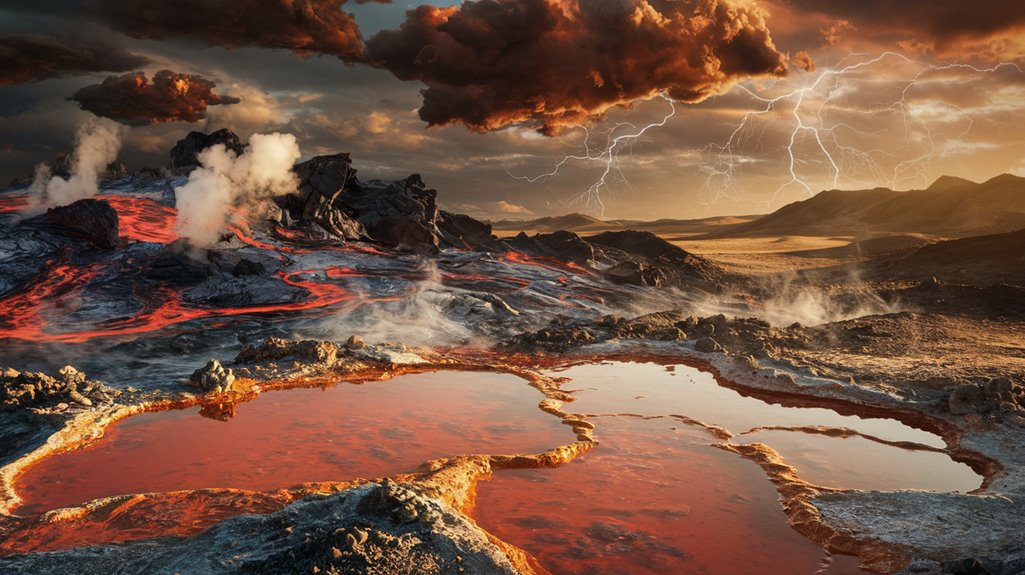
The remarkable story of Earth's water begins long before life emerged. When magma oceans interacted with hydrogen-rich atmospheres, they created the primordial waters that would become our oceans. A recent study in Nature reveals that hydrogen-rich atmospheres were common among young planets during their formation.
You'll find that early Earth's waters were quite different from today's – warmer, more acidic, and iron-rich. This unique primordial chemistry, particularly around hydrothermal vents, set the stage for life's emergence. Much like Arctic ground squirrels in torpor, these early conditions remained stable for long periods.
At these vents, where temperatures reached 70°C and conditions were alkaline, simple organic compounds formed and evolved into more complex molecules.
The key breakthrough came with protocell formation. These early versions of cells, made from fatty acids and isoprenoids, could survive in seawater-like conditions.
Scientists have even recreated these protocells using just 14 molecules, demonstrating how life might've first organized itself in Earth's ancient oceans.

